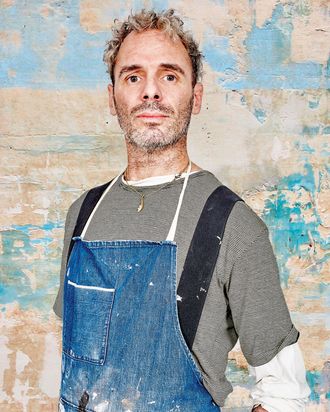
Here, the best renovation and décor advice from top professionals in five disciplines: decorative painter, window-treater, general contractor, interior designer, and landscape architect.
The Decorative Painter, Kevin McCormick, Founder, KMC Paint Design
How does your work differ from a regular paint job? Decorative painting can capture a specific mood or add an extra boost of style. A coat of charcoal gray in a bedroom, for instance, is dramatic; an oversize pattern can transform a ceiling; and wide, horizontal stripes make a room look so much larger. When I painted the lobby of Kirkman Lofts, a converted soap factory in Dumbo, I made the walls look like they had been exposed to different chemicals with oxidized shades of pinks and blues.
How do you get to an idea like that? Usually the client and I come together with some sort of shared visual reference or a mood board. Then we have a color consultation to make sure we are reflecting the desired mood within that palette. I’ll produce an 11-by-17-inch sample to mimic the feeling of what this painting might look like room-size. Before I get to work, I always let the client know that certain stages can be pretty rough-looking.

How do you mean? I often work with multiple colors and plaster sizes, which I’ll slice up with knives to give a suggestion of layers of different-colored paints that have been applied to the wall over several decades. Before I put paints and glazes over the wall, it’s one big mess. It all looks great at the end, but there’s the inevitable moment as things dry that can be difficult for some people.
All that layering sounds like it takes a lot of time. I try to stick to ten days max. I don’t want to intrude too much upon people’s living spaces.
Any advice for simple color schemes? Choose three to five shades in the same family. I like to get a bunch of sample books from the paint store and then select four shades from the same card. Start with the darker colors in the corners and move into lighter hues in the center of the wall. This serves as a great backdrop for other art, like paintings and sculptures.
Trick of the Trade: “A wall-size canvas for renters. It doesn’t put you at risk of losing your security deposit.”
No website; 646-322-1736

The Window Treater, Erik Bruce, Founder, Erik Bruce Curtains
A lot of modern apartments don’t have curtains anymore. Are they out of style? But there’s no reason why you can’t add an element of fine art to them. You can make curtains out of stainless-steel chains and felt appliqué. You can layer one fabric in three levels of opacity to allow light in at varying heights. I have a bright-yellow netting curtain with a yellow track in my studio, and I love the contrast of a black tracking system on a white New York City apartment wall.
So are you anti–roller blind? Not at all. There’s a shade I love called the E Screen Koolblack that does a fantastic job at maintaining glare control and regulating heat. That, to me, is such a better option than a sad, heavy curtain.
How can you open up a small studio? I’m a big fan of partitions, and they don’t have to be entirely opaque, either. I recently designed a curtain made of layers of netting that was designed to separate a room in various ways, depending on where you position it. A good partition will divide the space without making it feel claustrophobic.
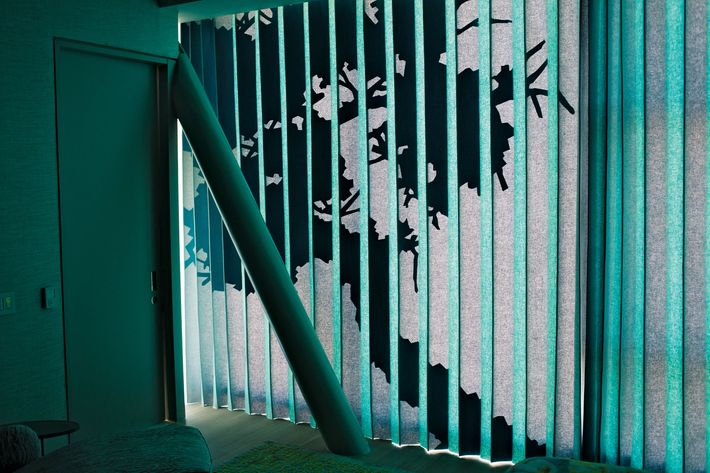
Do you have a favorite brand for cheap blinds and hardware? Ikea shades and curtain rods. They’re very inexpensive, but they’re clean-looking and get the job done.
How about installations — what’s best, what’s cleanest? Use tracks whenever you can, instead of rods and rings. Tracks are a much easier element to use on a day-to-day basis. These are items you move every day, morning and night, and when you put a curtain on a cumbersome piece of hardware, it’s more irritating to use.
And what about keeping them clean? Shake the dust out weekly, vacuum with an upholstery brush, and send them to the dry cleaners only if they’re stained. Don’t put them in the washing machine — it can weaken the fibers.
Trick of the Trade: “Sheer wool is heavier than cotton and linen, so it drapes more gracefully and wrinkles far less.”
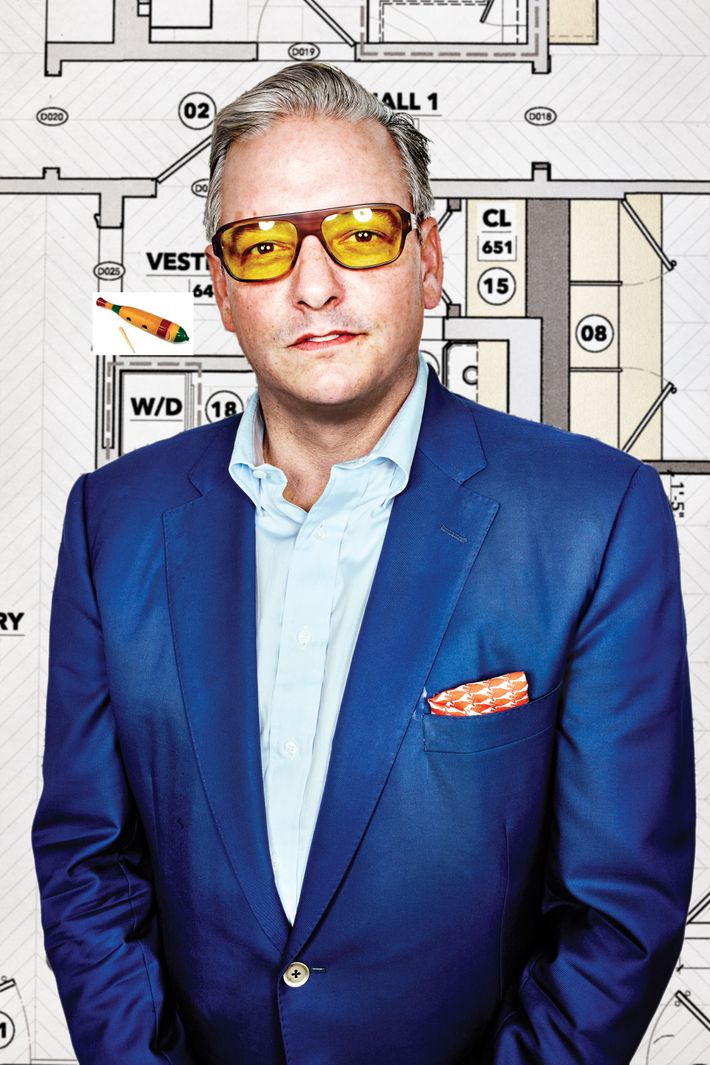
The Contractor, Chip Brian, Co-founder, Best & Company NYC
How do you find a good contractor in New York? There are a number of great resources out there, like Sweeten.com, which matches homeowners to renovators, and the Franklin Report, which rates talent. You should also visit contractors’ offices and have them walk you through their process. This gives you a chance to see past work and whether your personalities click. You’re about to enter into a long-term relationship with
this person!
How does a homeowner avoid conflict and keep things going smoothly? We need to know up front if you live in a cooperative or a condo and how many neighbors you have. Each building has its own renovation rules. Be up front about your budget and how much work you want done. It always helps to email a list of objectives with pictures of your apartment and a Pinterest board of ideas. That can make it easier for you, and him, to describe your goals to vendors. And don’t be afraid to ask dumb questions — if you pretend to know and nod your head, you’re likely to end up with something you don’t want.
What’s the most important part of a renovation?The old remodeling adage says to invest in what’s accretive, in what increases the value of the asset. That will always be a beautifully designed kitchen and bathroom.
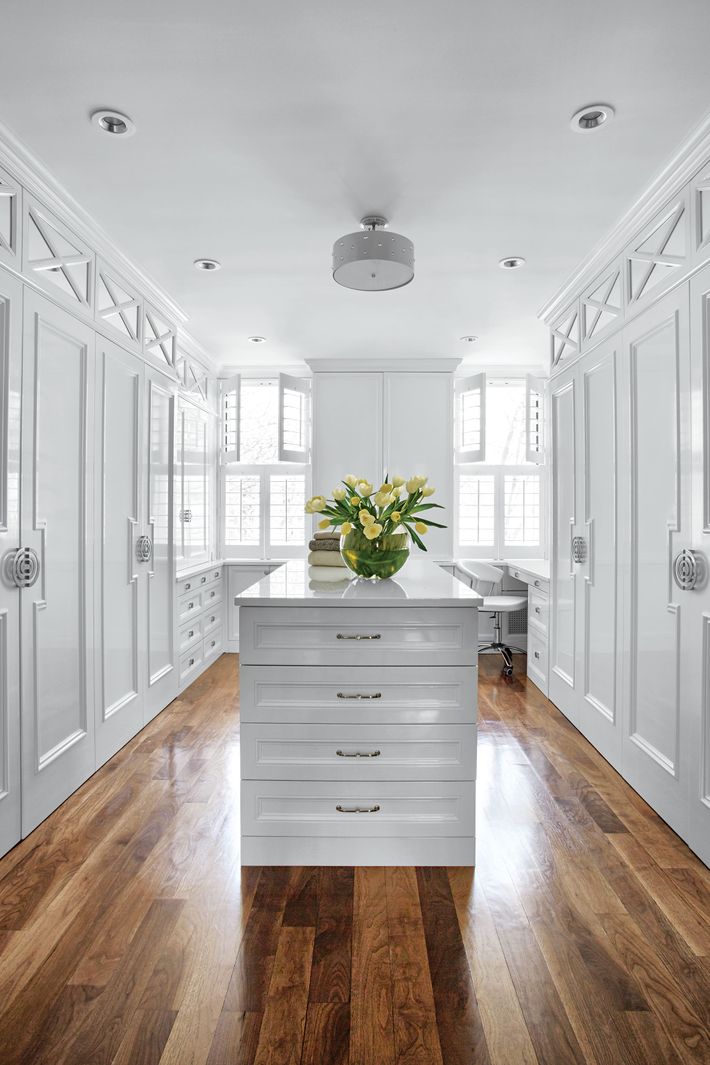
Where’s the biggest price disparity? Paint. It can cost $10,000 to paint a 1,000-square-foot apartment, and another guy can do it for $500. It’s all about subjective satisfaction. Some people don’t care about the quality of the paint because they’re going to hang art on the wall. Other people look at the walls as art themselves.
Favorite ways to elevate a design cheaply? Any material, regardless of cost, will be attractive if it’s well installed. I designed a coffee shop in Long Island City called the Mill using nothing but discarded materials. Another great resource is the company Build It Green. You can pick up beautiful used cabinet sets and appliances and all sorts of materials. Literally any material can look good — except the avocado porcelain from 1987 that’s making a comeback.
Is there one tool everyone should have in his or her arsenal? A butter knife! It’s been my go-to tool since I was a kid. It’s a chisel, a pry bar, a screwdriver, you name it. And everyone’s got one in the drawer. The spoon doesn’t cut it, but the butter knife does.
Trick of the Trade: “I encourage people to Google alternative ways to use something traditional. Take basic subway tile: You expect it on a bathroom wall. But I’ve seen subway tiles on the ceiling look pretty fantastic.”
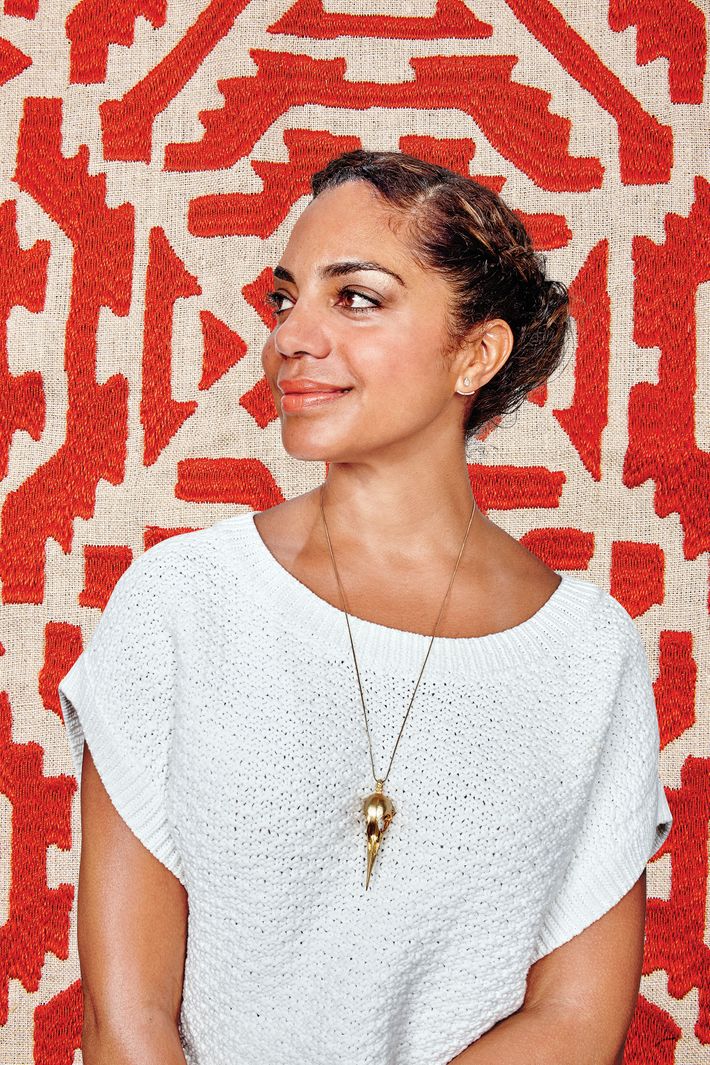
The Interior Designer, Danielle Colding, Founder, DCDNY Inc.
Are you a fan of the client who shows up armed with a Pinterest board?I love that! When you pore through magazines and Pinterest, a pattern emerges, and that helps you find a decorator who shares your vision. I recently completed a project in Harlem and the client had a full binder of ideas just for her bedroom. It was intense, but it gave me good parameters.
I bet the dynamic changes with a couple. Yes — you need to hear how they both talk about a space. Do they want the living room to function as a work area, or is it solely an escape? One person is always the budget-watcher who doesn’t care about specifics, and the other person is hyper-detail-oriented. It’s important to be very clear up front that everyone will be compromising.
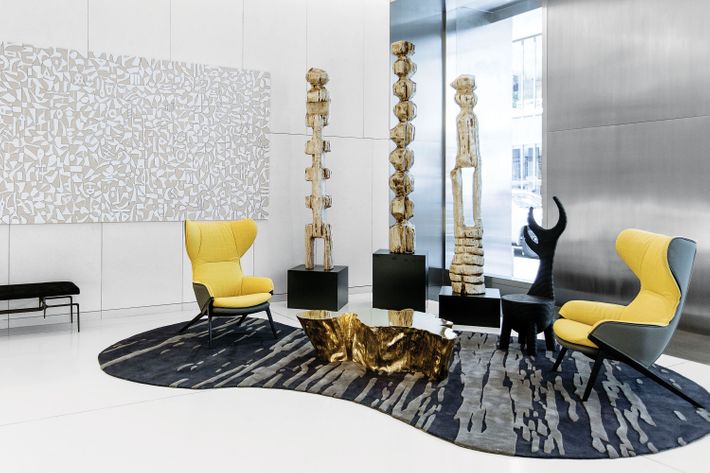
Especially on the budget. What do you do when your pocketbook is smaller than your ambition? Mix old and new and high and low. That’s why I love flea markets so much. The Brooklyn Flea has beautiful sculptural lamps and vases. I also adore RePOP, in Williamsburg — I got a gorgeous armchair there for $200. And big-box stores like West Elm and CB2 make wonderful accessories like throw pillows. People underestimate the throw pillow, but it’s such an easy way to transform a space. The covers zip on and off, so you can change them seasonally — or whenever the mood strikes.
Thoughts on how to maximize a tiny space? You can paint a studio a deep green, put some eye-catching stuff on the wall, and make it feel special and cozy. I like to focus on transitional spaces like hallways and small bathrooms: For example, I have a narrow hallway from my living room to my bedroom. I painted it a deep teal and covered the walls with art. After I walk through that moody space, the bedroom feels humongous.
Trick of the Trade: “Don’t paint a small space white. Deeper colors, ones with contrast and pop, bring your home to life.”

The Urban Landscape Architect, Brian Sawyer, Co-founder, Sawyer | Berson
Besides the obvious space issues, what are the particular challenges to New York gardeners? We’re right in the middle of the USDA climate zone, which means temperatures are below freezing in the winter and over a hundred degrees in the summer. That can wreak havoc on a garden. When soil freezes and thaws, it breaks a plant’s structure. Extreme heat causes everything to dry out. Then there are the locations: High rooftops, for example, require wind and sun protection and irrigation systems. The good news is all kinds of plants thrive here, from camellias to yucas. There’s even a prickly-pear cactus native to New York called the opuntia. It grows in the dunes out East.
Is there an ideal plant-to-flower ratio? A third of your terrace garden should be evergreen. The second third should be perennials — tough, dependable things like grasses and hosta that can withstand almost any temperature. Then the last third of your garden — and no more than a third — should be tender annual flowers like petunias, marigolds, and sunflowers. I say “no more than a third,” because flowers attract insects. There are just as many bugs in the city as there are in the country, and they’re hard to get rid of.
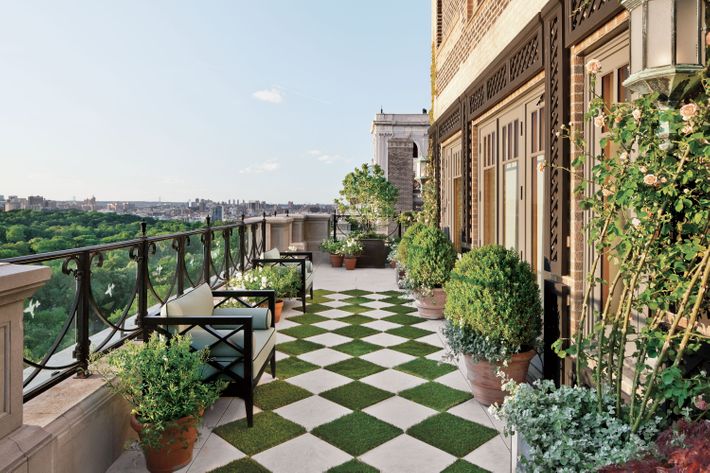
Any suggestions for folks with black thumbs? Most people don’t have enough light in their apartments, and tough base plants like boxwood and mugo pine have beautiful texture and can live without direct sun. Tropical plants such as coleus and vermilia flourish in the shade and present stunning color in their leaves. You get a lot of punch for a little maintenance. I also like ferns, because you can find them everywhere. All of these plants are pretty hard to kill.
Favorite tools? A good pair of secateurs for pruning and needle-nose scissors for deadheading flowers and leaves. I like having a little stock of pots in different sizes — and always put a plastic pot inside the clay pot so your plant doesn’t dry out. Jamali, in the East Village, is my favorite place to buy equipment.
For those of us without roof gardens: How can we bring a little nature inside? Try an indestructible evergreen like juniper. It lives all year and fits into any space. And, of course, there’s nothing like West 28th Street. When I walk through the Flower District, I feel like I’m in my own personal terrace garden.
Trick of the Trade: “Roses are beguiling, but they attract a ton of bugs and mildew. Just because it’s beautiful at the market doesn’t mean it will thrive on a terrace.”
*This article appears in the Winter 2016 issue of New York Design Hunting.

